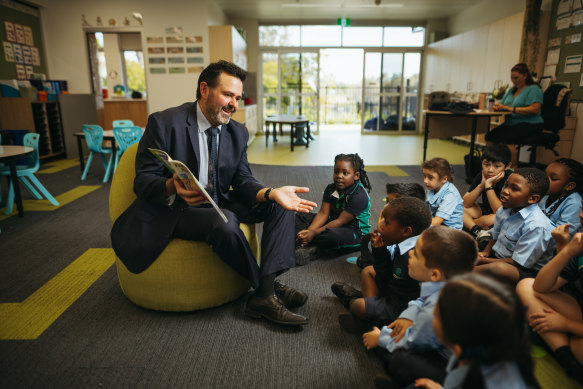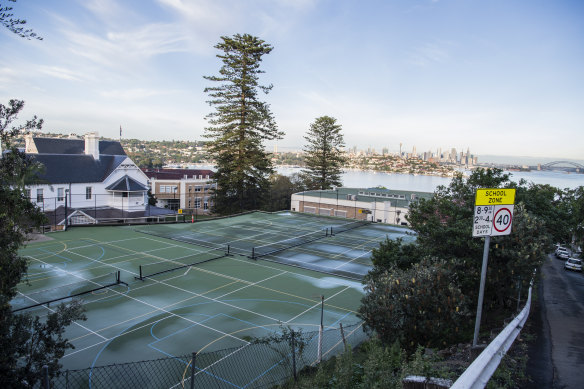She said an increase in federal government funding for private schools over several decades had made them more affordable while parents perceived they offered a better quality education.
“There is a belief that if you pay for something, it is going to be better. It is a bit of a myth, but it has been a long-term belief,” she said.

A bigger share of students are being sent to private school at a primary school level compared to a decade ago.Credit: Dion Georgopoulos
She said teacher shortages of recent years could be one factor that had driven more parents from the public system.
“There are critical shortages of teachers, and they’ve hit public schools particularly in certain areas very hard,” she said.
Independent Schools Australia chief executive Graham Catt said part of the reason for the growth was because parents had sought out schools that could administer remote learning effectively.
“From 2020 to 2022, in the pandemic, we do know one of the drivers of that growth was the ability of independent schools to adopt and pivot,” he said.
Christian Schools Australia director of public policy Mark Spencer said parents were attracted to the values-based education on offer.
“They are those who are described as Howard’s battlers, Tony’s tradies or the silent Australians – they’re ordinary suburban mums and dads, a tradie dad with a mother who is working part-time in office or retail,” he said.
“We have those sorts of parents, we also have parents from ethnic migrant backgrounds, we have a lot of applications from Islamic parents because we provide a values-based education they find attractive.”
The report said in the 2020-21 financial year, the average public school student was allocated $20,940 in total government funding, compared to $12,260 for private school students.
“Governments save an estimated $5.7 billion in funding due to the contribution from families and other private sources,” the report said. The average annual fee for a private school was $5272, well below Australia’s most expensive school, Kambala in Rose Bay, which charges $46,300 per year for year 12.
Loading
The Demographics Group demographer Simon Kuestenmacher predicted enrolments in private schools would continue to grow, largely thanks to the hundreds of thousands of people who migrated to Australia every year. However, he warned demand may be tempered by parents reconsidering private education simply because more of their cash was tied up in paying a huge mortgage in Sydney or Melbourne.
“One relatively big cost-cutting option is to take your kid out of private school – or most commonly not to send them in the first place,” he said.
“Most people don’t start a family until their mid-30s, they buy a house in their late 30s, if you send them to a private high school in mid to late 40s, you have a big fat mortgage, cost of living is going up, you’re not feeling optimistic about the future.”
The report said independent schools had a ratio of 14 children for every teacher in primary schools and 10.4 students per teacher for secondary schools, lower than in the public and the Catholic schools sector.
Oran Park Anglican College principal Naomi Wilkins said her school had grown by 1000 students in 12 years. “We are forecasting another 90 students next year, we don’t have enough classrooms to accommodate the demand,” she said.

The tennis courts at Kambala Rose Bay, which is the most expensive school in the country.Credit: Louise Kennerley
Leppington Anglican College, a pre-kindergarten to year 7 school in south-west Sydney, opened this year with 190 students. Principal Michael Newton said he expected his school to grow to 350 pupils in 2024 when it takes on year 8 students.
“The main reasons parents say they choose the school is they are after a well-disciplined environment with high expectations,” Newton said.
Loading
“They want high standards, especially with uniform and behaviour, and culture and values that align with their own.” Annual fees at the school are just over $8000 for year 7.
“Overall there is also a lack of schools in parts of south-west Sydney,” he said.
With Nigel Gladstone
The Morning Edition newsletter is our guide to the day’s most important and interesting stories, analysis and insights. Sign up here.
